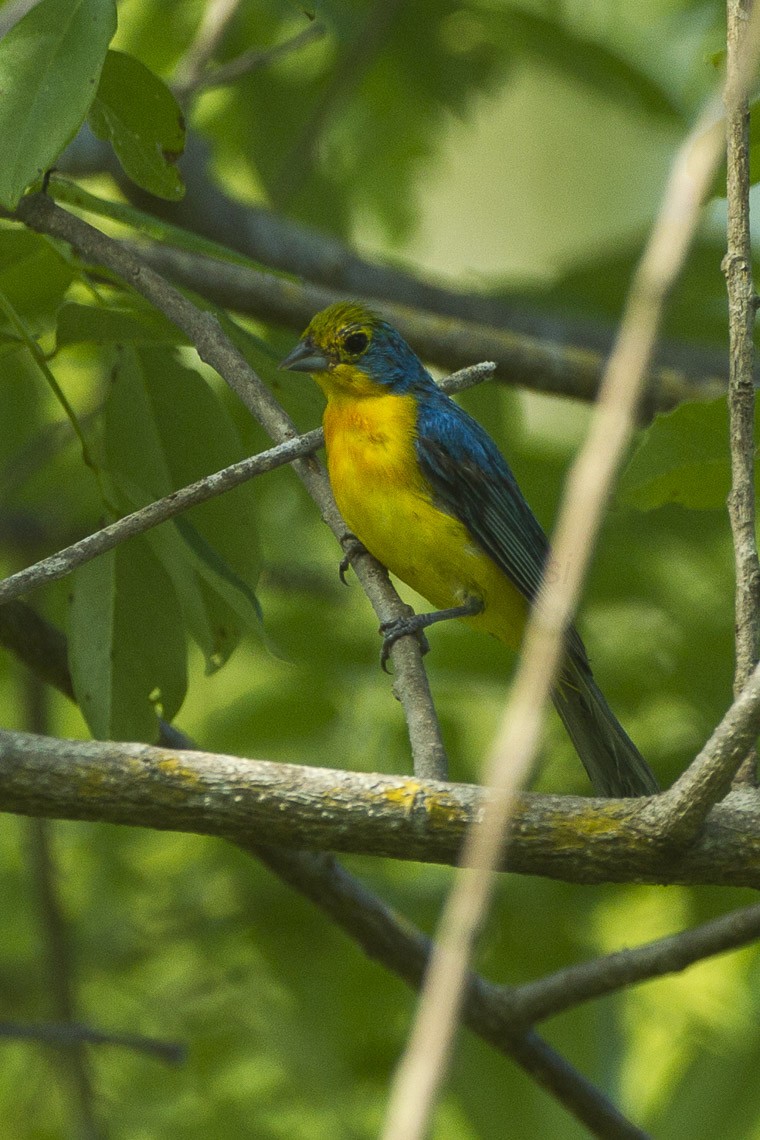Orange-breasted Bunting
A species of North american buntings Scientific name : Passerina leclancherii Genus : North american buntings
Orange-breasted Bunting, A species of North american buntings
Botanical name: Passerina leclancherii
Genus: North american buntings
Content
Description General Info
 Photo By Francesco Veronesi , used under CC-BY-SA-2.0 /Cropped and compressed from original
Photo By Francesco Veronesi , used under CC-BY-SA-2.0 /Cropped and compressed from original Description
The orange-breasted bunting grows to a length of about 12.5 cm (5 in) and is slightly smaller than the rose-bellied bunting (Passerina rositae), which shares its range. The adult male has a pale green crown, turquoise blue nape and upper parts, often tinged with green, and a turquoise tail. The lores, eye-ring and underparts are canary yellow, deepening to golden-orange on the breast. The adult female has greyish-green upper parts and yellow underparts. The iris is dark brown, and the beak and legs are grey. The song is a rather plaintive warble, rather slower and less drawn out than that of other members of the genus. 
Size
12 cm
Life Expectancy
5-6 years
Nest Placement
Shrub
Feeding Habits
Orange-breasted Bunting, a tropical songbird, primarily consumes seeds, such as white millet, supplemented with insects and fruits. Its foraging is often done in dense vegetation, displaying a preference for certain types of seeds and insect prey, indicative of specialized dietary adaptations.
Habitat
Orange-breasted Bunting's preferred habitats include tropical dry forests, sparse scrublands, and bushy deciduous woodlands. These birds thrive in lowland areas with dense scrub and moderate tree canopy coverage, typically below 900 meters altitude. They are adapted to environments with high seasonal rainfall variability and minimal daily temperature shifts. Orange-breasted Bunting shows adaptability by occupying secondary forests, indicating a possible seasonal shift in habitat preference.
Dite type
Granivorous
General Info
Feeding Habits
Bird food type
Distribution Area
The orange-breasted bunting is endemic to Mexico. Its range extends from the Pacific coast in southern Nayarit, Jalisco, Michoacán and Guerrero to western Chiapas, and inland to the western part of Puebla, an area of about 276,000 km (107,000 sq mi). It inhabits tropical dry forest and arid scrubland, thorny thickets, bushy deciduous woodland, clearings and woodland edges, at altitudes up to about 900 m (3,000 ft). It has a patchy distribution, not being present in some areas of apparently suitable habitat. It is more abundant in secondary growth than in undisturbed forest. The species was introduced to the Hawaiian island of Oahu in 1941 but did not become established, and was extirpated by 1952. 
Species Status
Not globally threatened.
Scientific Classification
Phylum
Chordates Class
Birds Order
Perching birds Family
Cardinals Genus
North american buntings Species
Orange-breasted Bunting